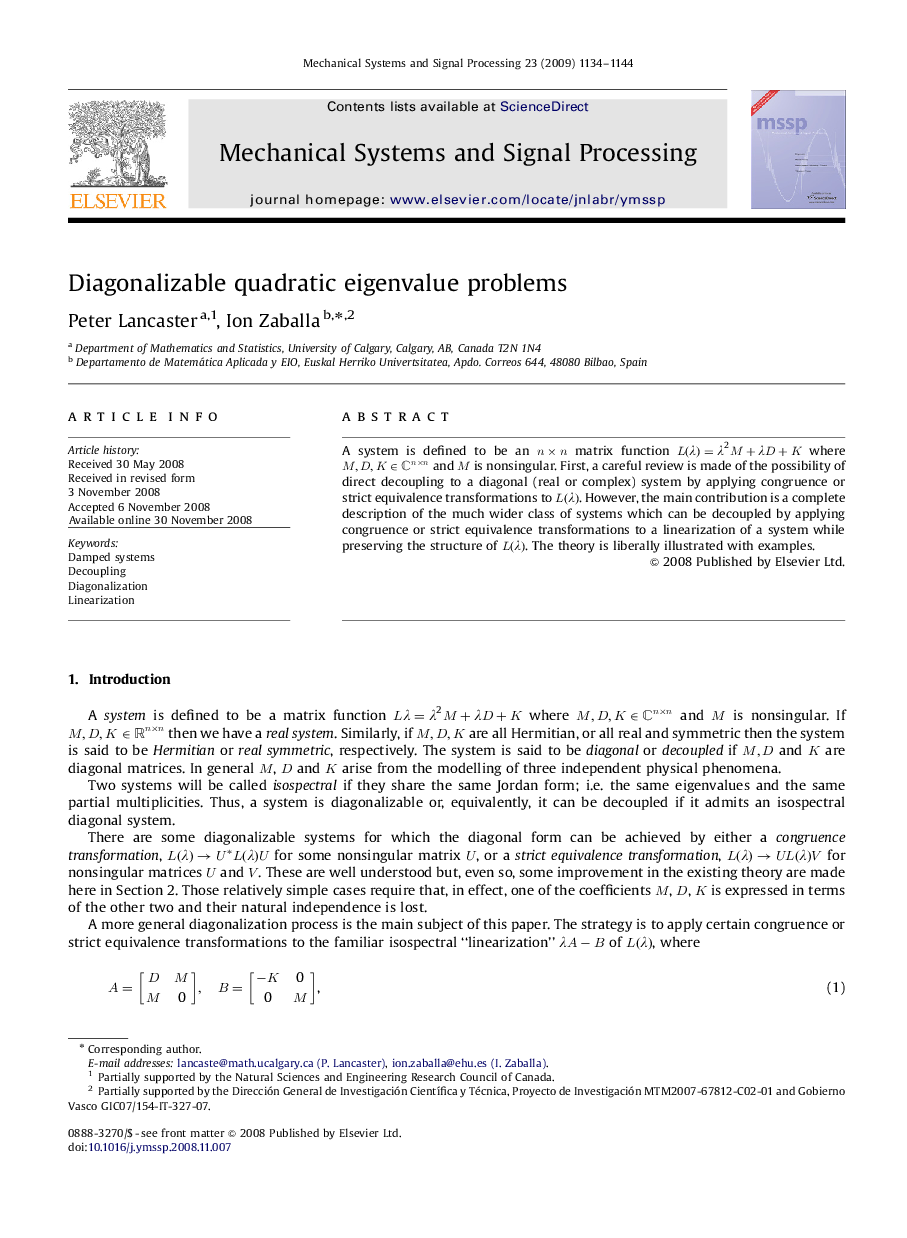| Article ID | Journal | Published Year | Pages | File Type |
|---|---|---|---|---|
| 561778 | Mechanical Systems and Signal Processing | 2009 | 11 Pages |
Abstract
A system is defined to be an n×nn×n matrix function L(λ)=λ2M+λD+KL(λ)=λ2M+λD+K where M,D,K∈Cn×nM,D,K∈Cn×n and MM is nonsingular. First, a careful review is made of the possibility of direct decoupling to a diagonal (real or complex) system by applying congruence or strict equivalence transformations to L(λ)L(λ). However, the main contribution is a complete description of the much wider class of systems which can be decoupled by applying congruence or strict equivalence transformations to a linearization of a system while preserving the structure of L(λ)L(λ). The theory is liberally illustrated with examples.
Related Topics
Physical Sciences and Engineering
Computer Science
Signal Processing
Authors
Peter Lancaster, Ion Zaballa,
